Famous Birds in Ranthambore :
The Park has over 300 species of birds in Ranthambore. Some of the best locations to watch birds at, and from, are Malik Talao, the Ranthambore Fort, Rajbagh Talao, Padam Talao and in the Jhalra area. While the park is good for birding. Restrictions placed by the authorities to control the crowds may not appeal to serious birders. Some of the best birding regions are on the edges, and outside the Ranthambore park.

What birds are in Ranthambore National Park?
The famous birds in Ranthambore are Black Francolin, Painted Francolin, Common Quail, Rail Quail, Painted Spurfowl, Indian Peafowl, Greylag Goose, Barheaded Ghoose, Cotton Pygmy Ghoose. Northern Pintail, Common Pochard,Bee Eaters, Cuckoos, Parakeets, Asian Palm Swift, Owl. Nightjars, Pigeon, Dove, Crakes, Snipes, Sandpipers, Gulls, Terns, Great Crested Grebe. Eagles, Darters, Cormorants, Egrets, Herons, Bitterns, Flamingos, Ibis. Pelicans, Storks, Pittas, Shrikes, Treepies, Crows, Orioles, Cuckoo-Shrikes. Minivets, Drongos, Flycatchers, Ioras, Wood Shrikes, Pipits, Brown Headed Barbet. Indian Grey Hornbill, Indian Roller and many more you can see at Ranthambore National Park.
Specification of Ranthambore Bird:
The mastery fly, ebullient songs of chirping have the power to evoke strong emotion to all those who watch birds in their natural habitat. Birders have known for their bright plumage cause fascination and often envy among their human observers. In face birds are one of the most popular topics among poets only because of the strong emotions that they evoke.This National Park is just like a paradise for bird watchers. The park has more than 300 species of birds in Ranthambore. It can be a bit difficult birding at Ranthambore without prior information on best spots.Albeit bird never stays at a single place. They are spread all over the park but some places are more fruitful for targeted birds.Malik Talao, the Ranthambore Fort, Rajbagh Talao, Padam Talao and the Jhalra area are some of the best locations where one can maximize the joy of the birding tour. Dense forest makes bird watching an arduous task.
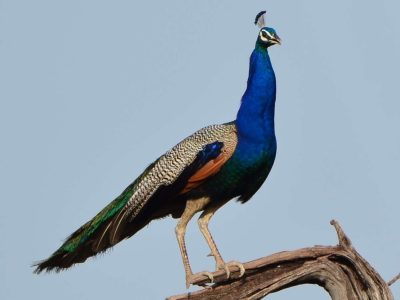
Indian Peafowl
The Indian peafowl is a type of peacocks that is indigenous to the Indian subcontinent. It is also referred to as the common peafowl and the blue peafowl. It has been adopted by several other nations.
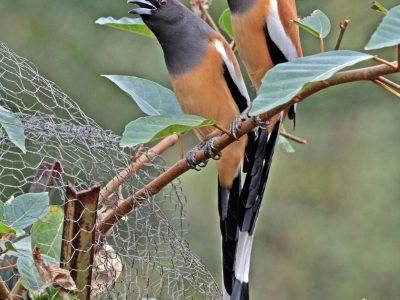
Rufous treepie
An indigenous treepie to the Indian Subcontinent and surrounding regions of Southeast Asia is the rufous treepie. It belongs to the Corvidae subfamily of crows. It is highly noticeable due to its long tail.
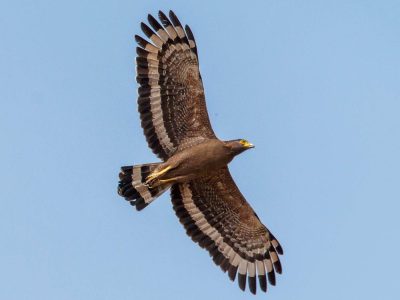
Crested serpent eagle
In forests throughout tropical Asia, you can find the medium-sized crested serpent eagle.

Common Teal
The ubiquitous and widespread Eurasian teal, also known as the common teal or Eurasian green-winged teal, breeds throughout temperate Europe and migrates south for the winter.

Black-winged stilt
The black-winged stilt, a member of the avocet and stilt family, is a relatively long-legged wader that is extensively spread. A single, almost global species is occasionally given the scientific name H. himantopus.
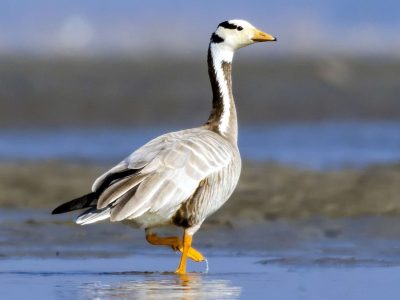
Bar-headed goose
The bar-headed geese is a species of goose that breeds in Central Asia on alpine lakes in large colonies and spends the winters as far south as peninsular India.In a ground nest, it produces three to eight eggs at a time.
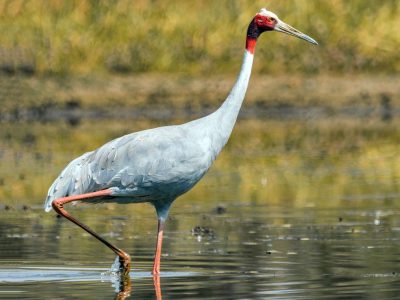
Sarus crane
The sarus crane is a large non-migratory crane that inhabits portions of Australia, Southeast Asia, and the Indian subcontinent.

White-throated kingfisher
The white-throated kingfisher, sometimes called the white-breasted kingfisher, is a tree kingfisher with a vast geographic range in Asia, ranging from the Sinai Peninsula in the east to China and Indonesia.
